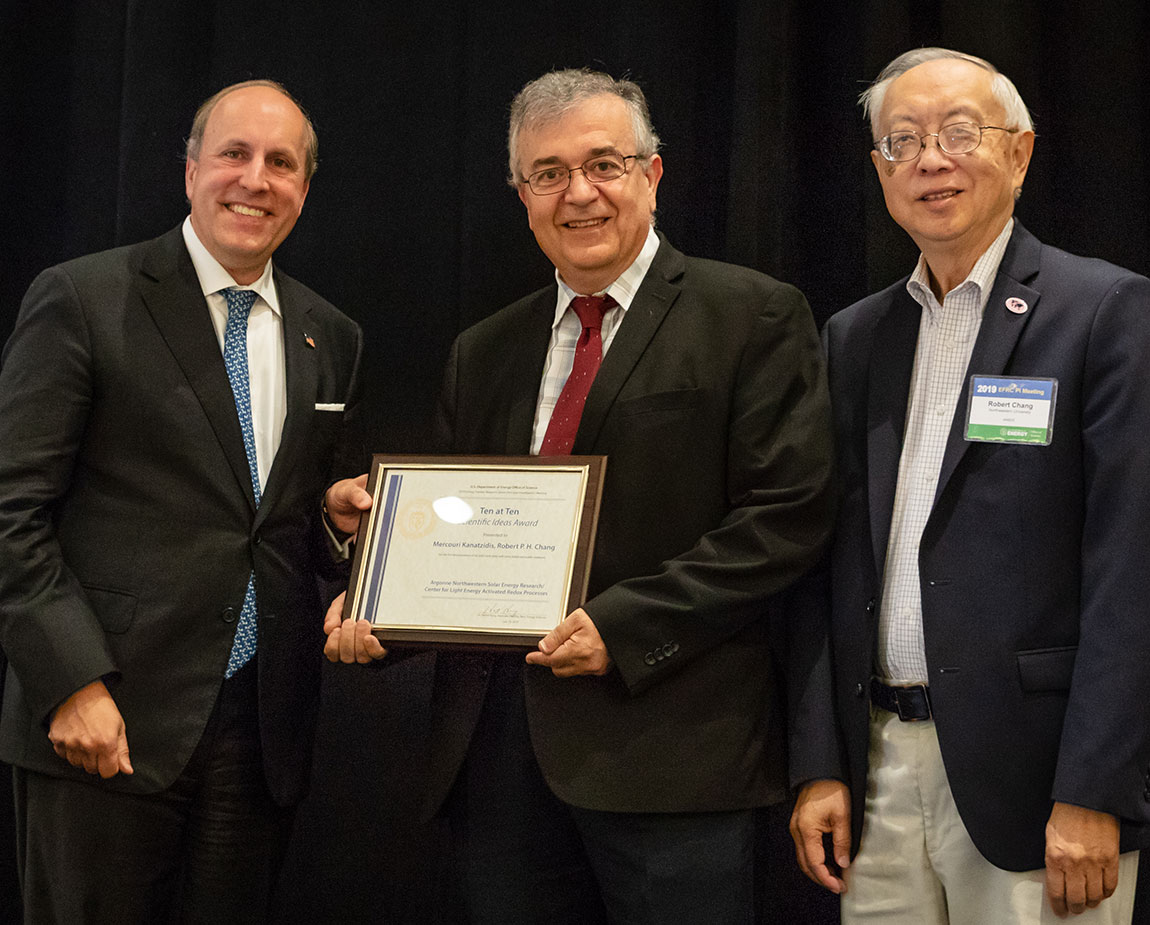Research Highlight: Kanatzidis
First demonstration of all-solid-state solar cells using halide perovskite
TiO2-based dye-sensitized solar cells also known as Graetzel cells we reported in 1991 by Professor Graetzel and co-workers and was the premier low cost easy to fabricate solar cell. Up to 2012 state of the art TiO2-based dye-sensitized solar cells had an efficiency of over 10% but faced serious bottlenecks for further progress because they used a 10-micron thick hole-conducting layer which was a corrosive iodide/triiodide organic solution (eventually causing cell failure). The Chang-Kanatzidis idea eliminated the entire liquid layer with a solid perovskite film which was 20 times thinner. This was a first spark that helped to ignite what became the halide perovskite revolution.
Both Chang and Kanatzidis were ANSER co-PIs and sought to find synergistic ways to work together. The key contact to enable the breakthrough came when Chang gave a talk on his work on Ti2-based dye-sensitized solar cells at an ANSER monthly research update meeting in the fall of 2011. Chang explained in detail why dye-sensitized solar cells, despite being so important, faced a grim future because of the necessity of the corrosive hole-transporting solution. The photovoltaic community was clamoring for a solid-state version of the solar cell, but no materials were available to perform the function of the iodide/triiodide solution. Kanatzidis had knowledge of just such a material from work in his lab and proposed that Chang use CsSnI3perovskite to produce hole conducting films made by a simple technique. Not only did the idea work, it turned out that the perovskite material itself worked as a solar absorber, leading to record-breaking efficiency.
The organic liquid layer in TiO2-based dye-sensitized solar cells is an ionic solution which enables the transport of photo-generated holes to the opposite side of the device. The cells suffer from severe performance instabilities because the organic iodide/triiodide solution slowly dissolves the dye from the TiO2surface and leaks from the device. The Chang-Kanatzidis cell replaced the entire liquid layer with a solid perovskite film which accomplished the same job. This created an all-solid-state device with an efficiency of over 10%. Chang and Kanatzidis showed that one we use a solution-processable inorganic semiconductor to deposit a solid film over the solar absorber layer of dye-sensitized solar cell to act as an efficient hole transport layer? Kanatzidis discovered that CsSnI3 perovskite can be deposited from organic solvent solutions to give black hole-doped p-type conductive films of the material.
Analysis of the Chang-Kanatzidis cell showed that CsSnI3 functioned not only as a hole transport layer, also as a solar absorber, further boosting device efficiency. Further controlled doping of the CsSnI3 perovskite transformed the perovskite material into a true semiconductor, allowing the perovskite to be used in the first lead-free CsSnI3 and MeNH3SnI3 solar cells.


